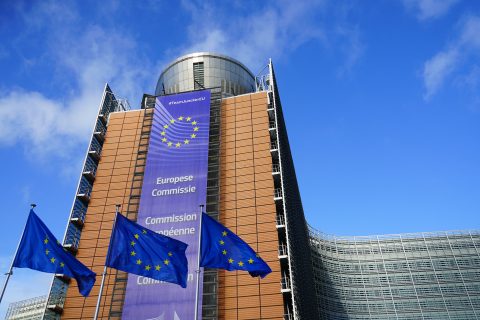ERFA: ‘Year of rail arrives in the most appropriate time’

On 15 December the European Parliament officially adopted 2021 as the European year of Rail with 684 votes in favour. ERFA welcomed the decision and highlighted the benefits and focal points that should be taken into account, seizing the opportunity. Ideally, the association is looking forward to a legal framework that will allow rail freight to reach its full potential and objectives.
Additionally, ERFA pointed out that the rail freight sector should also take initiatives itself in order not to get driven away from its goals. Relying only on policies and vague plans might prove to be insufficient. That is why all parties concerned should sit around the table and pinpoint the exact ways in which rail freight can contribute to Europe’s economic and climate goals.
Green goals
When it comes to the benefits of rail freight, the discourse unavoidably rotates around climate impact. Rail has proved to be the lowest CO2 emission mode of transport. Especially with regards to the Commission’s Climate Law, that aims to reach a net-zero carbon by 2050; rail transport will play a crucial role.
However, for the objectives to be achieved, the sector needs to increase its shares in freight volumes and traffic significantly. The much-discussed modal shift will not happen from one day to another. In contrast, ERFA warns that road freight will continue “playing an invaluable role in supply chains”, a fact which is reasonable especially in short-distance transportation.
Pragmatism
Understandably, rail freight oughts to redefine its approach on specific issues and services. How can this be done and with what scope? The association came up with some interesting proposals that might come handy both in the short and long term.
First of all, rail freight “must become more attractive to end-users”. In simple words, the sector should stop focusing so much on the general discussion of moving merits from road to rail. On the contrary, it should pay attention and work harder on practical solutions regarding the way that products can get transferred to rail.
Specific proposals, tools, and technologies constitute the right arguments that could persuade customers to use rail for the transportation of their goods. The ‘Green mode’ feature might be crucial and relevant to the environmental problems that the planet is facing currently. Nevertheless, when it comes to business, the market demands solid and competitive offers to count on. This remark constitutes a point that the sector should work on more intensively.
Pressure tools
The circumstances caused by Covid-19 have been extensively analysed before. It is clear now that besides the difficulties, the pandemic worked to rail freight’s benefit in many ways. With prices in other modes of transport reaching unprecedented highs, many customers decided to take their chances with rail to keep distributing their products and maintain the supply chain active. The rail sector managed the situation efficiently and proved to be reliable under the less optimal conditions.
Earning the trust of customers is a critical step to take. However, the efficiency of services, apart from good organisation and cooperation, relied also on the freed infrastructure capacity resulting from decreased rail passenger transportation. In this case, rail freight proved in practice, that with the right “quality and quantity” of capacities, it can provide credible and customer-oriented services. Virtually, this fact should constitute rail freight sector’s most potent argument in the process of pressuring for more favourable legislation.
Competition
Furthermore, the rail sector should embrace competition more, both internally and externally. Diversity is essential for a sustainable rail market. As ERFA reports, “on average, non-incumbent operators account for 31 per cent of European rail freight national markets”. During 2020 it was these operators that also contributed the most to keep supply chains open and running. On top of that, they will also contribute to growing the market in the future. Monopolies do not seem to be the solution anymore, and the variety of services seems to become a new and viable trend.
Regarding competition with other markets, and in relation with green objectives, ERFA mentioned that it embraces the concept of a European ‘green label’ for products. The idea proposed by Sigrid Nikutta, CEO of DB Cargo, in late November, focuses on labelling products transported by rail, with a credible European stamp. In the same context as this of labelling biological products, Nikutta argued that customers should be aware of the way that products are transported before reaching their household. Such a development should be examined furtherly, and get implemented soon provided that rail is indeed fully aligned with climate regulations.
Momentum
While commenting on the news, Dirk Stahl, ERFA President, stated that “ holding the European Year of Rail in 2021 is the most appropriate”, since the ending year proved the dynamics and potential that rail freight has. Consequently, 2021 should be the year that rail will reap the fruits of a challenging but equally productive period.
Conor Feighan, ERFA Secretary-General, mentioned on his behalf that 2021 will be a critical year for the future of rail freight. This is so because “forthcoming developments such as the revision of Rail Freight Corridors and TEN-T Regulations will play a pivotal role in determining whether rail freight can reach its true potential”.
You just read one of our premium articles free of charge
Want full access? Take advantage of our exclusive offer




